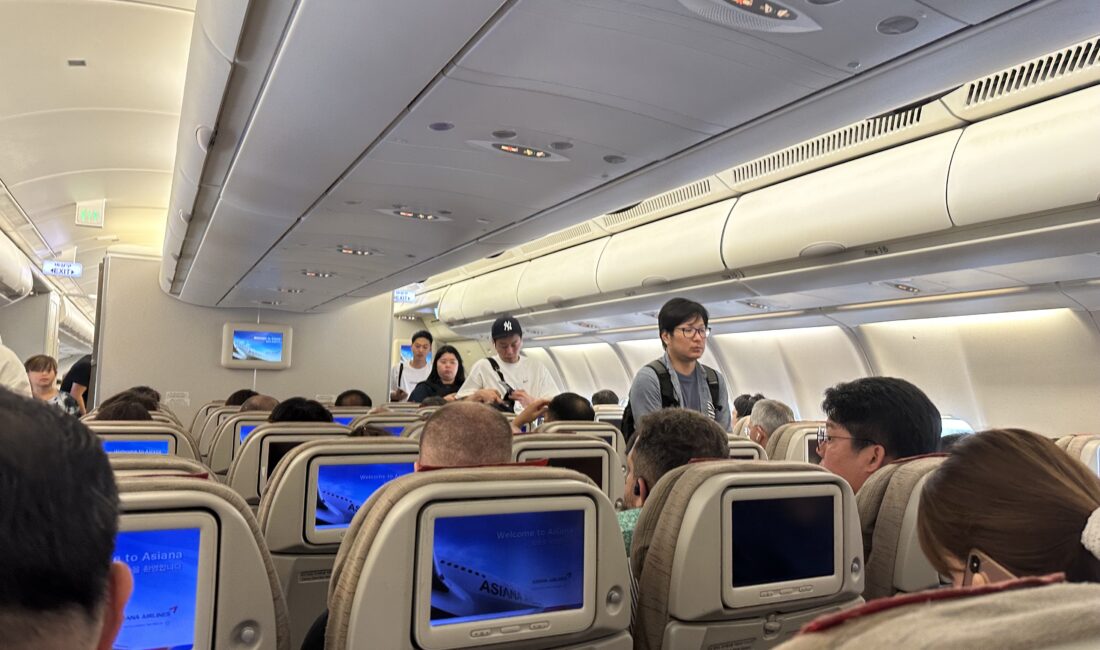Claustrophobia, in general terms, is known as the fear of entering or being trapped in a small space or room. This condition can be triggered by many situations or stimuli. Elevators, windowless rooms, and even wearing tight-neck sweaters can provoke it. Often classified as an anxiety disorder, it can ultimately result in panic disorder. Studies suggest that 2–5% of the world’s population is affected by severe claustrophobia. So how does this manifest on airplanes? Are airplanes inherently claustrophobic spaces? And what can travelers with this fear do during flights?
If you have to fly with claustrophobia, you may feel anxious about your trip. But flying with claustrophobia doesn’t have to be a disaster. With careful planning, you can keep your phobia under control.
What should you do?
Claustrophobia during travel often begins at the airport. Elevators, narrow passageways, or even underground metro rides on the way can trigger it. But let’s focus directly on the inside of the airplane and what you can do in those claustrophobic spaces.
Claustrophobia starts with your ticket.
Dealing with claustrophobia actually begins with your seat selection. Unless you’re flying private, feeling trapped on a plane is inevitable. On wide-body aircraft, try to book a seat in the first row of a section so you have open space in front of you. Exit rows are also a good option. On narrow-body aircraft, choose an aisle seat if possible. Arrive early. As soon as boarding begins, enter the aircraft and inform the crew about your condition—they will be supportive. Finally, avoid middle seats even if it costs extra.
Bring or request an eye mask.
Your brain is responsible for your claustrophobia, so you can ease symptoms with an eye mask. The moment you feel panic rising, close your eyes. Wearing a soft eye mask can make you feel safer and even help you drift off to sleep. Imagine another open space in your mind. As your mind settles into this imagined environment, your breathing will slow. Working with a therapist beforehand can also help you visualize and tame your claustrophobia.
Relax and distract yourself.
There are plenty of activities on board to beat your fears. Once seated, unbutton your shirt collar and take off your shoes. Focus on something engaging like a book, iPad, or any activity you brought with you. Enjoy the in-flight snacks—treat yourself with little things that make you happy. Watching your favorite movies either on your laptop or the airline’s entertainment system can also help you overcome your fears.
Avoid alcohol.
Many passengers drink alcohol before or during flights to cope with stress, fear, or just for enjoyment. But a quality journey largely depends on staying away from alcohol. The cabin’s dry, recycled air increases dehydration. Since alcohol worsens this, it’s better to hydrate regularly with water. Meanwhile, doctors at the University of Wisconsin’s Department of Neurology highlight that patients aware of their serious condition should never self-medicate before flying without consulting their doctor.
What are the most claustrophobic spots on an airplane?
The answer depends on the severity of the patient’s condition; it can apply to the entire plane. Passengers who can’t shake the feeling of being trapped in a tube at 30,000 feet are likely to struggle most. But aircraft lavatories are especially claustrophobic: small, confined, and a common trigger for fear. Sitting in a middle seat is another major factor that can worsen claustrophobia.



